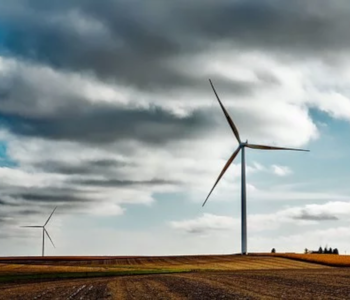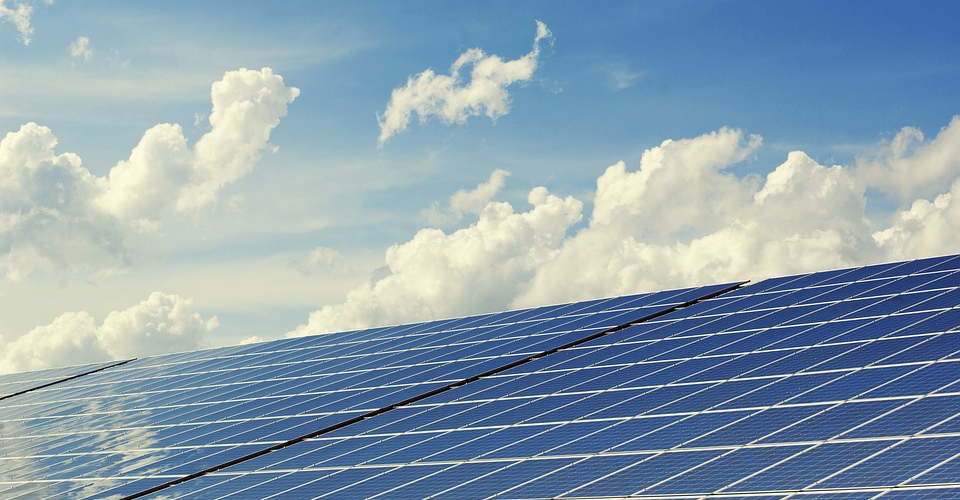How 3D Printing Can Revolutionize the Renewable Energy Industry
Despite all its merits, the renewable energy industry continues to fight an uphill battle. Traditional coal-based power is simply too powerful to be completely toppled because of how inexpensive it is and how developed the technology has become through the years. Renewable energy remains an economically poor choice and can only thrive with the support of governments and environmentalist groups.
As part of the movement to make renewable energy more viable, there is now an effort to leverage the strengths of 3D printing. How can 3D printing help this industry, and will it be enough to turn the tide against coal?
3D printed solar panels

The solar energy industry is the fastest-growing segment of renewable power. Solar energy benefits from the simplicity of the technology. Aside from a low barrier to technical skills, solar installations do not require a huge capital cost. It has even become fashionable for house owners to have their own solar panels.
However, there are still several hurdles that solar panel technology needs to overcome. They are still too expensive to manufacture and require materials that are considered highly toxic. The low conversion efficiency of solar panels also means that they take far too long to reach a breakeven point in terms of cost.
The use of 3D printing in solar panels has been done on at least two fronts. The first is making a simple switch to 3D printing for the application of semiconductor ink onto the wafers used in solar panels. This conductive material is typically made with a combination of boron and polysilicon.
3D printing allows this material to be applied on very thin cells – only about 200 microns thick. This significantly boosts the efficiency of the solar panels on account of a large specific surface area of the semiconductor ink. Even more impressively, the 20% boost in efficiency can be attained at an even smaller cost.
3D printing company T3DP has also taken a stab at improving solar panel design. Through a patented volumetric 3D printing technique, T3DP has been able to build solar panels using perovskite, a calcium titanium oxide crystal. This material has superconductive properties that can potentially create high-performance solar panels.
A huge advantage of the volumetric 3D printing technique is that it can cure an entire 3D printed project in a single step instead of layer by layer. This greatly speeds up the manufacturing process, thereby driving costs down.
If 3D printing can be harnessed to create solar panels, it will effectively democratize the provision of solar energy. This means that solar electricity can be made accessible to remote areas which are in most need of low-cost power.
Building wind turbines higher
Unlike solar energy, wind energy is a capital-intensive venture that requires highly skilled labor. Putting up even a single wind turbine requires a lot of work and funding. Other engineering principles come into play when setting the limits to the height of wind turbines.
Typical wind turbines are made with a combination of steel and concrete. The height of the wind turbine column is restricted to only around 100 meters. This puts into consideration the difficulty of transporting a pre-built column by road.
3D printing technology presents the possibility of wind turbine supports being built on-site. Without transportations logistics, this should make it possible to construct wind turbines that are about 200 meters high. This is relevant because wind speed tends to pick up at higher altitudes, which means that more power can be generated.
The very prospect of 3D printing with concrete has been a challenge that many companies, researchers, and scientists have been working on through the years. It presents a lot of potential in the context of 3D printing actual, livable houses. However, the possibility of 3D printing possibly doubling the output of wind turbines is an opportunity that is too good to not explore.
3D printed wind turbine blades

Earlier this year, researchers at the University of Maine made headlines when they set out to create the largest 3D printer in the world for the purpose of 3D printing full-sized molds for wind turbine blades. This venture was funded by the US Department of Energy and is being carried out with the help of the Oak Ridge National Laboratory (ORNL).
The 3D printer will use a biopolymer derived from wood which should be theoretically cheaper than using carbon-fiber-reinforced ABS. The goal of the study is to reduce the development costs and manufacturing times for wind turbine blades.
This is a markedly different approach from the one that GE took back in 2019 when they directly used 3D printing to make turbine blades. This was not for wind power generation but for their GE9X jet engines. The objective behind 3D printing the blades was to make them lighter, effectively reducing engine weight and increasing efficiency.
In June 2020, GE partnered with COBOD, a 3D printing construction company. With the expertise of GE, this partnership aims to create 3D-printed wind turbine towers. By building optimized blade models, wind turbines can be more efficient and cheaper to manufacture.
Repairing plant equipment with 3D printing
Italy-based Enel Green Power has been studying ways to use 3D printing to help make equipment repairs in their geothermal and hydropower facilities. This will reduce the disposal of parts that have been deemed irreparable and can generate savings by avoiding outright parts replacement.
As anyone can imagine, the parts needed in a power plant cannot be repaired by just any standard 3D printer. Enel Green Power uses a laser metal deposition (LDM)) 3D printer supplied by Prima Additive. This 3D printer uses a powdered metal feedstock that is fused to a melt pool on the surface of a piece of solid metal.
Since the pilot run of the 3D printer to repair an impeller of the compressor of a geothermal power plant, it has been used to restore several more impellers instead of replacing them. The company estimates that repairing four out of six impellers will generate savings of up to €70,000 per year.
Another study by the Oak Ridge National Laboratory (ORNL) discusses how additive manufacturing can be used to make specialized tools for geothermal power facilities. These tools can include drilling implements for high-temperature and acidic environments – tools that are typically specially designed and manufactured only in small volumes.
According to the ORNL, additive manufacturing can play a huge role in keeping the costs of geothermal development down. An in-house 3D printer can provide on-demand production, allowing for the repair of parts without having to resort to costly shutdowns. This will also reduce the expenses of having to keep a large number of spare parts in inventory.
Rapid prototyping

Just like any other large-scale industry, renewable energy benefits from product innovations and new tools. Along the process, prototypes have to be manufactured for review and testing.
Before 3D printing, prototypes were made mostly using injection molding. While this is a reliable and established technique, it requires machining a mold out of a robust material. This is a time-consuming and expensive step.
Rapid prototyping via 3D printing is a lot more practical. It can create customized parts faster and does not require a high-performance mold. 3D printed prototypes cost the same regardless of the number of units. This means that parts cost the same whether you manufacture just five of them or a hundred. In the field of product development, the discount on machining and manufacturing costs means that companies can take on more risks.
Final thoughts
A majority of energy experts will agree that renewable power is the way forward. Issues like climate change and carbon emissions can no longer be ignored. The development of more sustainable power sources is only one of the solutions to this problem but is something that has constantly struggled to gain footing.
Poor economics is one of the major issues of renewable power. With technology that’s so untested, investing in renewable power has a lot more risks compared to building a new coal power plant. The challenge then is to make the development and operations of renewable energy facilities cheaper.
This is where 3D printing can possibly play a role. There is already no doubt that, in some cases, 3D printing can provide a more practical alternative to conventional manufacturing processes. Whether it’s turbine blades or bits for geothermal drilling, an industrial-scale 3D printing process can offer design freedom and rapid manufacturing regardless of volume.


